Chapter 13- Organization and Control of Neural Function
1/19
There's no tags or description
Looks like no tags are added yet.
Name | Mastery | Learn | Test | Matching | Spaced |
|---|
No study sessions yet.
20 Terms
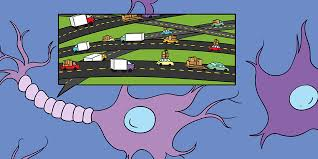
The nurse knows which of the following phenomena listed below is an accurate statement about axonal transport?
A) Anterograde and retrograde axonal transport allow for the communication of nerve impulses between the neuron and the central nervous system (CNS).
B) Materials can be transported to the nerve terminal by either a fast or slow component.
C) The unidirectional nature of the axonal transport system protects the CNS against potential pathogens.
D) Axonal transport facilitates the movement of electrical impulses but precludes the transport of molecular materials.
B) Materials can be transported to the nerve terminal by either a fast or slow component.
Feedback: The bidirectional axonal transport system allows for the transport of molecular materials (as opposed to electrical impulses); anterograde transport has both slow and fast components.
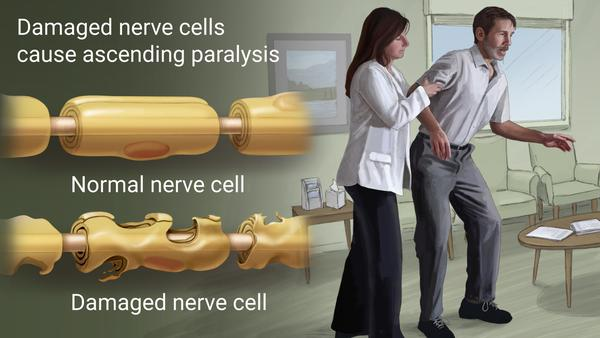
An adult male has a new diagnosis of Guillain-Barré syndrome. The nurse knows which of the following pathophysiological processes underlie the deficits that accompany the degeneration of myelin in his peripheral nervous system (PNS)?
A) The destruction of myelin causes fewer Schwann cells to be produced in the client's PNS.
B) The axonal transport system is compromised by the lack of myelin surrounding nerve cells.
C) Unless remyelination occurs, the axon will eventually die.
D) A deficit of myelin predisposes the client to infection by potential
pathogens.
C) Unless remyelination occurs, the axon will eventually die.
Feedback: In some pathologic conditions, the myelin may degenerate or be destroyed. This leaves a section of the axonal process without myelin while leaving the nearby oligodendroglial or Schwann cells intact. Unless remyelination takes place, the axon eventually dies. A lack of myelin is associated with reduced insulation and impulse conduction. Schwann cells produce myelin, not vice versa, and the myelin is responsible for neither the axonal transport system nor protection against pathogens.
While assessing a critically ill patient in the emergency department, the nurse notes on the cardiac monitor an R-on-T premature ventricular beat that develops into ventricular tachycardia (VT). Immediately, the patient became unresponsive. The nurse knows that based on pathophysiologic principles, the most likely cause of the unresponsiveness is
A) metabolic acidosis that occurs spontaneously following any dysrhythmias.
B) interruption of the blood/oxygen supply to the brain.
C) massive cerebrovascular accident (CVA) resulting from increased perfusion.
D) a blood clot coming from the heart and occluding the carotid
arteries.
B) interruption of the blood/oxygen supply to the brain.
Feedback: The brain receives 15% to 20% of the total resting cardiac output and consumes 20% of its oxygen. The brain cannot store oxygen or engage in anaerobic metabolism. An interruption of blood or oxygen supply to the brain rapidly leads to clinically observable signs and symptoms. Unconsciousness occurs almost simultaneously with cardiac arrest. Metabolic acidosis will occur later in the cardiac arrest but not immediately and is not responsible for the patient's unresponsiveness. CVAs can be caused by thrombosis formation or plaque occlusions, but it is not the primary reason for unconsciousness in VT.
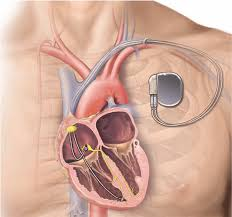
When educating a patient about to undergo a pacemaker insertion, the nurse explains the normal phases of cardiac muscle tissue. During the repolarization phase, the nurse will stress that membranes must be repolarized before they can be reexcited. Within the cell, the nurse understands that
A) potassium channels open while sodium channels close, causing repolarization to the resting state.
B) the influx of calcium is the primary stimulus for the repolarization of cardiac tissue.
C) only the electrical activity within the heart will determine when repolarization occurs.
D) the cell membranes need to stay calm resulting in muscle tissue
becoming refractive.
A) potassium channels open while sodium channels close, causing repolarization to the resting state.
Feedback: Repolarization is the phase during which the polarity of the resting membrane potential is reestablished. This occurs with the closure of the sodium channels and opening of the potassium channels.

A client with a diagnosis of depression has been prescribed a medication that ultimately increases the levels of the neurotransmitter serotonin between neurons. Which of the following processes will accompany the actions of the neurotransmitter in a chemical synapse?
A) Two-way communication between neurons is permitted in contrast to the one-way communication in electrical synapses.
B) Communication between a neuron and the single neuron it is connected with will be facilitated.
C) The neurotransmitter will cross gap junctions more readily.
D) More neurotransmitters will cross the synaptic cleft and bond with postsynaptic receptors.
D) More neurotransmitters will cross the synaptic cleft and bond with postsynaptic receptors.
Feedback: In chemical synapses, neurotransmitters cross the synaptic cleft and bond with postsynaptic receptors to facilitate communication between neurons. This communication is one way, not two way, and each neuron has synaptic connections with thousands of other neurons. Gap junctions are associated with electrical synapses, not chemical synapses.
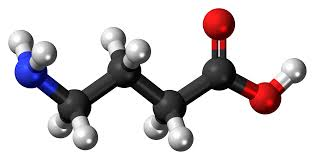
The neurotransmitter GABA mainly functions to trigger inhibitory postsynaptic potentials (IPSPs). Therefore, when explaining this to a group of nursing students, the nurse will state that
A) it takes at least three chemical substances (amino acids, neuropeptides, and monoamines) to stimulate any activity between the cells.
B) there is a symbiotic relationship; therefore, the end result will be depolarization of the postsynaptic membrane.
C) the combination of GABA with a receptor site is inhibitory since it causes the local nerve membrane to become hyperpolarized and less excitable.
D) the neurotransmitters will interact with cholinergic receptors to bind to acetylcholine in order to produce hypopolarization within the cell.
C) the combination of GABA with a receptor site is inhibitory since it causes the local nerve membrane to become hyperpolarized and less excitable.
Feedback: A neurotransmitter can cause an excitatory or an inhibitory graded potential. The combination of a transmitter with a receptor site is inhibitory in the sense that it causes the local nerve membrane to become hyperpolarized and less excitable. This is called inhibitory postsynaptic potential (IPSP).
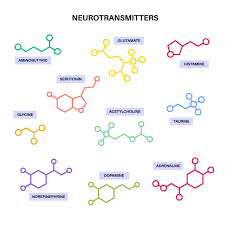
When reviewing the purpose/action of neurotransmitters as they interact with different receptors, the nursing instructor gives an example using acetylcholine. When acetylcholine is released at the sinoatrial node in the right atrium of the heart, it is
A) positively charged.
B) inhibitory.
C) overstimulated.
D) dormant.
B) inhibitory.
Feedback: The action of a transmitter is determined by the type of receptor to which it binds. Acetylcholine is excitatory when it is released at a myoneural junction, and it is inhibitory when it is released at the sinoatrial node in the heart.
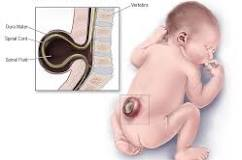
A male newborn infant has been diagnosed with spina bifida occulta. Which of the following pathophysiological processes has most likely contributed to the infant's health problem?
A) The neural groove failed to fuse and completely close across the top of the neural plate.
B) The infant's spinal cord and meninges protrude through his skin.
C) The child's central and peripheral nervous systems have insufficiently differentiated during embryonic development.
D) The infant's soma and viscera are underdeveloped.
A) The neural groove failed to fuse and completely close across the top of the neural plate.
Feedback: Spina bifida occulta is characterized by incomplete closure of the axial groove around the ectodermal tube (neural tube). Protrusion of the spinal cord and meninges through the skin is associated with meningomyelocele. Insufficient development of the CNS, PNS, soma, or viscera is not considered a central characteristic of spina bifida occulta.

A child is experiencing difficulty with chewing and swallowing. The nurse knows that which of the following cells may be innervating specialized gut-related receptors that provide taste and smell?
A) Special somatic afferent fibers
B) General somatic afferents
C) Special visceral afferent cells
D) General visceral afferent neurons
C) Special visceral afferent cells
Feedback: Special visceral afferent cells innervate specialized gut-related receptors. Their central processes communicate with special VIA column neurons that project to reflex circuits producing salivation, chewing, swallowing, and other responses. Special somatic afferent fibers are concerned with joint and tendon sensation. General somatic afferents respond to stimuli that produce pressure or pain. General visceral afferent neurons innervate visceral structures such as the GI tract, urinary bladder, and the heart and great vessels.

A nursing student having trouble moving his head from side to side is likely experiencing a problem with which type of neurons?
A) General visceral efferent neurons
B) Preganglionic neurons
C) Parasympathetic postganglionic neurons
D) Pharyngeal efferent neurons
D) Pharyngeal efferent neurons
Feedback:
Pharyngeal efferent neurons innervate brachial arch skeletal muscles, muscles of mastication and facial expression, and muscles of the pharynx and larynx. They also innervate muscles responsible for moving the head. General visceral efferent neurons and preganglionic neurons (same) innervate smooth and cardiac muscle and glandular cells of the body, most of which are in the viscera. Parasympathetic postganglionic neurons have no effect in moving the head.

Following a spinal cord injury suffered in a motor vehicle accident, a 22-year-old male has lost fine motor function of his fingers and thumb but is still able to perform gross motor movements of his hand and arm. Which of the following components of his white matter has most likely been damaged?
A) The inner layer (archilayer)
B) The middle layer (paleolayer)
C) The outer layer (neolayer)
D) The reticular formation
C) The outer layer (neolayer)
Feedback:
Fine manipulation skills are the domain of the outer layer, or neolayer, of the tract
systems. The inner and middle layers and the reticular formation are not noted to be
responsible for these functions.
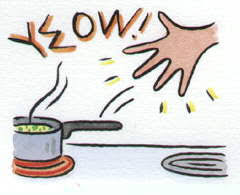
Not realizing that its surface was hot, a woman has quickly withdrawn her hand from the surface of a bowl that she was removing from a microwave. Which of the following phenomena has facilitated the rapid movement of her hand in response to the painful stimulus?
A) Her midbrain has rapidly responded to the nociceptive stimuli and induced arm flexion.
B) The withdrawal reflex of her peripheral nervous system has quickly mediated between afferent and effector neurons.
C) The forebrain has mediated a protective spinal cord reflex.
D) Her CNS has enacted a protective response received by neurons that innervate her arm muscles.
D) Her CNS has enacted a protective response received by neurons that innervate her arm muscles.
Feedback: A reflex is a CNS-mediated response to a painful stimulus that involves an afferent neuron and an effector neuron. The midbrain and forebrain do not necessarily participate in the sensory or motor components of the response.

A Tae Kwon Do (TKD) master is applying downward pressure just above the elbow joint on an attacker who immediately collapses to the ground. The TKD master knows the elbow joint can bend inward toward the body but not in the opposite direction. Which of the following reflexes is applicable to this example?
A) Knife–clasp
B) Withdrawal
C) Myotatic
D) Inverse myotatic
D) Inverse myotatic
The inverse myotatic reflex is demonstrated in this example; when too much pressure is applied to the arm and tension reaches a certain level, the Golgi tendon “relaxes.” Since the arm bar is being held, the only way the body can “reflex” is by going down toward the ground, making the attacker fall downward. In persons with spastic paralysis, the inverse myotatic reflex becomes hyperactive and produces what is called the clasp–knife reaction. The withdrawal reflex is stimulated by a damaging (nociceptive) stimulus and quickly moves the body part away from the offending stimulus, usually by flexing a limb part. The myotatic or stretch reflex controls muscle tone and helps maintain posture.
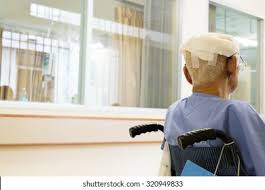
During a clinical assessment of a 68-year-old client who has suffered a head injury, a neurologist suspects that a client has a sustained damage to her vagus (CN X) nerve. Which of the following assessment findings is most likely to lead the physician to this conclusion?
A) The client has difficulty swallowing and has had recent constipation and hypoactive bowel sounds.
B) The client is unable to turn her head from side to side, and her tongue is flaccid.
C) The client has a unilateral facial droop, dry eyes, and decreased salivary production.
D) The client is unable to perform any fine motor movements of her
tongue.
A) The client has difficulty swallowing and has had recent constipation and hypoactive bowel sounds.
Feedback: Dysphagia and impaired GI motility are associated with damage to the vagus nerve. Lateral movement of the head is mediated by CN XI. Facial droop and dry eyes are associated with CN VII, the facial nerve, while abnormal tongue movement is a result of damage to CN XII, the hypoglossal nerve.

A 9-year-old girl has a diffuse collection of symptoms that are indicative of deficits in endocrine and autonomic nervous system control. She also suffers from persistent fluid and electrolyte imbalances. The nurse knows which of the following aspects of the nervous system listed below would her health care providers focus their diagnostic efforts on?
A) Her afferent and efferent cranial nerve function
B) Possible damage to her pons and medulla
C) Impaired function of her hypothalamus
D) Potential damage to the girl's cerebellum
C) Impaired function of her hypothalamus
Feedback: The hypothalamus plays a central role in the maintenance of fluid and electrolyte balance and in the maintenance of endocrine control. Various cranial nerves, the hindbrain, and the cerebellum would be less likely to be implicated.
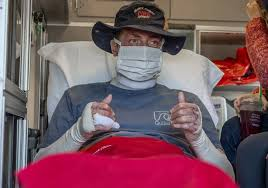
A badly burned firefighter has been in an induced coma for 3 weeks. When he awakens, he thanks his son for singing Happy Birthday to him a week earlier. Which part of the brain is responsible for allowing him to hear and comprehend while comatose?
A) Thalamus
B) Hypothalamus
C) Corpus callosum
D) Basal ganglia
A) Thalamus
Feedback: Coordination and integration of peripheral sensory stimuli occur in the thalamus, along with some crude interpretation of highly emotion-laden auditory experiences that not only occur but also can be remembered. For example, a person can recover from a deep coma in which cerebral cortex activity is minimal and remember some of what was said at the bedside. Inferior to the thalamus, and representing the ventral horn portion of the diencephalon, is the hypothalamus; it is the area of master-level integration of homeostatic control of the body's internal environment. The corpus callosum is a massive commissure, or bridge, of myelinated axons that connects the cerebral cortex of the two sides of the brain. The basal ganglia lie on either side of the internal capsule, just lateral to the thalamus; they supply axial and proximal unlearned and learned postures and movements, which enhance and add gracefulness to UMN-controlled manipulative movements.
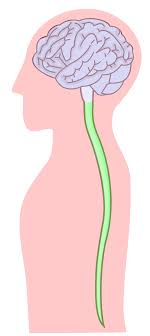
Which of the following statements best conveys an aspect of the role of cerebrospinal fluid (CSF)?
A) It provides physical protection for the brain and ensures that leukocytes and erythrocytes are evenly distributed in the CNS.
B) CSF cushions the brain and provides a near-water medium for diffusion of nutrients.
C) CSF distributes plasma proteins throughout the superficial gray matter of the CNS.
D) It ensures that the high metabolic and oxygenation needs of the brain are met, as well as absorbing physical shocks.
B) CSF cushions the brain and provides a near-water medium for diffusion of nutrients.
Feedback: In addition to providing a cushion for the CNS, CSF provides a medium that is 99% water in which nutrients, electrolytes, and wastes can be diffused. It is not centrally involved in the distribution of oxygen, plasma proteins, or blood cells.

A 21-year-old male is brought to the ED following a night of partying in his fraternity. His friends found him “asleep” and could not get him to respond. They cannot recall how many alcoholic beverages he drank the night before. While educating a student nurse and the roommates in the fraternity, the nurse begins by explaining that alcohol is
A) water-soluble compound that is easily absorbed by the gastric lining of the stomach.
B) very lipid soluble and rapidly crosses the blood–brain barrier.
C) able to reverse the transport of some substances to remove them from the brain.
D) very likely to cause sedation, and therefore the patient just needs to sleep it off.
B) very lipid soluble and rapidly crosses the blood–brain barrier.
Feedback: The blood–brain barrier prevents many drugs from entering the brain. Most highly water-soluble compounds are excluded from the brain. Many lipid-soluble molecules cross the lipid layers of the blood–brain barrier with ease. Alcohol, nicotine, and heroin are very lipid soluble and rapidly enter the brain. Alcohol toxicity can kill patients, especially if they are not used to consuming beverages. These patients should never be left alone to “sleep it off.”
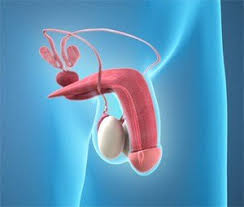
A 45-year-old diabetic male is experiencing erectile dysfunction. If his erectile dysfunction is caused by the nervous system, then the nurse can educate the patient that the venous blood supply to the penis is controlled by
A) sacral parasympathetic fibers.
B) the hypothalamus.
C) the vagus nerve.
D) postganglionic sympathetic neurons.
A) sacral parasympathetic fibers.
Feedback: The pelvic nerves leave the sacral plexus on each side of the cord and distribute their peripheral fibers to the bladder, uterus, urethra, prostate, distal portion of the transverse colon, descending colon, and rectum. Sacral parasympathetic fibers also supply the venous outflow from the external genitalia to facilitate erectile function. The hypothalamus, vagus nerve, and postganglionic sympathetic neurons do not control erectile function.

As you are walking in the park, a huge black Labrador (dog) runs up to you and places his paws on your shoulders. Immediately your heart starts racing, you feel palpations and anxiety, and your hands become a little shaky. The nurse knows that this response is primarily caused by
A) fear of dogs that make you feel like your chest is being tightened and that you have lost control of the situation.
B) increased levels of glucocorticoids by the adrenal glands that result in an increase in epinephrine level.
C) response of the cholinergic muscarinic receptors on innervational targets of postganglionic fibers.
D) stimulation of the release of β2-adrenergic receptors, which will open the airway and increase oxygenation.
B) increased levels of glucocorticoids by the adrenal glands that result in an increase in epinephrine level.
Feedback: Any situation sufficiently stressful to evoke increased levels of glucocorticoids also increases epinephrine levels. Increased epinephrine levels results in tachycardia, palpitations, anxiety, and tremors. Cholinergic muscarinic receptors and β blockers do not help in times of immediate stress.